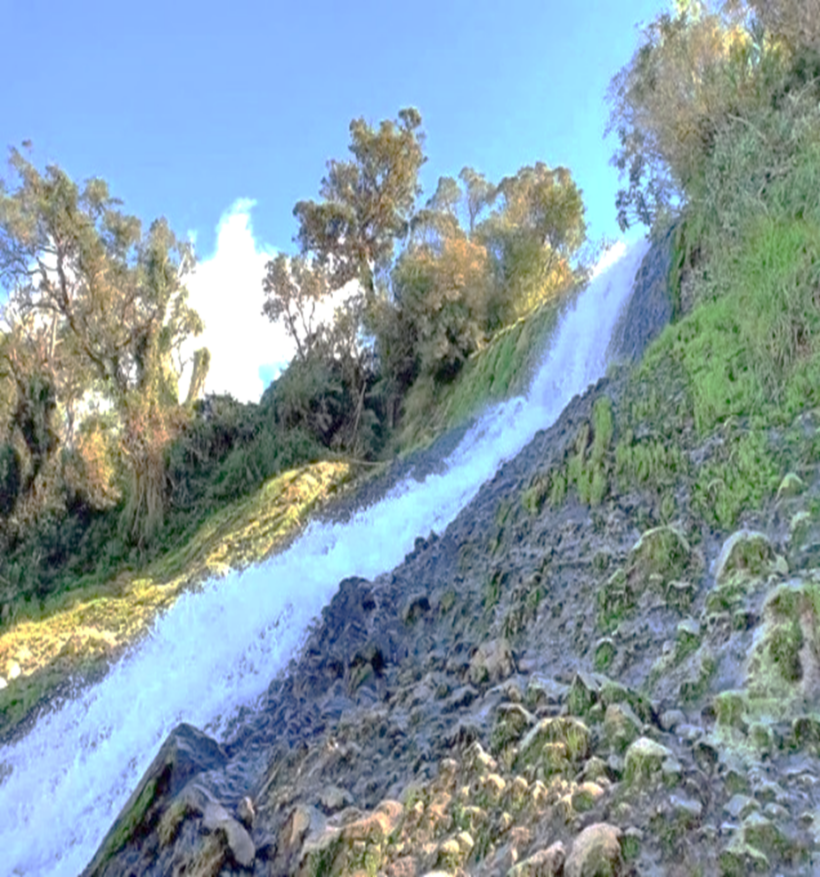by: Joselyn L. Alicwadey and Lembert C. Lagawed
Within the expansion of the Cordillera Administrative Region (CAR) in the Philippines, a wealth of scenic landscapes, vibrant aquatic environments, and rich cultural heritage awaits exploration. Among these treasures, the legendary Inodey Falls emerges as a site to behold, enchanting nature lovers and families alike with its breathtaking beauty and wonder. Nestled at the boundary between Tadian and Bauko in Mountain Province, it invites visitors to immerse themselves in the stunning scenery and tranquil atmosphere of this natural gem. Whether seeking adventure or a peaceful retreat, Inodey Falls promises a unique experience for those who venture to witness its splendor.

As the water cascades gracefully over the rocks, it creates a soothing symphony that dances through the air, harmonizing with the lush greenery—a perfect retreat for the soul.
The falls are breathtaking from several advantage points in Bauko, Mountain Province. Along the scenic route from some part of Mabaay to Lower Bauko, glimpses of the magnificent three-tiered waterfall can be seen as it tumbles down the mountainside. From a distance, the sight of water cascading in multiple layers creates a dramatic and enchanting spectacle against the rugged backdrop, inviting locals and tourists to marvel at nature’s beauty.
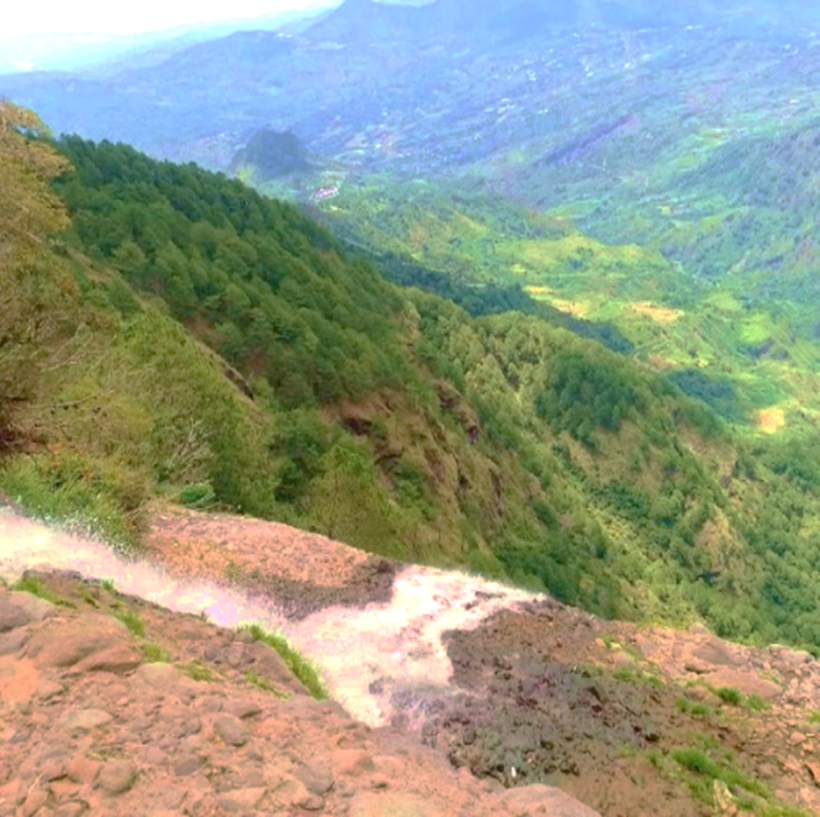
From the summit of the falls, a stunning panorama unfolds, revealing the lush greenery and majestic mountains. This vantage point offers breathtaking views of Tadian and Bauko, Mt. Province, allowing the onlooker to soak in the beauty and richness of the place—all from one spot!
The locals and tourists are enveloped in tranquility, allowing for a deep connection with the aquatic environment. The colors of flora and distant peaks create a picturesque backdrop, making it a perfect spot for photography, reflection, and simply soaking in nature’s wonder.
Approaching Inodey Falls intensifies this immersive experience. The rhythmic roar of cascading water mingles with a gentle mist, creating a cotton-like effect as it descends. From the summit, tourists can pause on a sentinel-like rock to admire breathtaking views of lush surroundings, including the majestic mountains and verdant fields of Bauko and Tadian. The cool breeze and soothing sounds of the falls, complemented by the melodies of birds and insects offer a serene escape from daily stresses. On a sunny day, droplets sparkle, while the mist nourishes the lush greenery, inviting those who visit to be in awe.
Beyond its aesthetic charm, Inodey Falls plays a vital role in the local ecosystem. The crystal-clear waters nourish the gardens above, known for producing semi-temperate vegetables like potatoes, cabbages, green and red peppers, pechay, and carrots, essential for both Mountain Province and Benguet. This area, locally known as “Cada,” a name that evokes its former wooded landscape, is now thriving with vegetable plots that contribute to the Cordillera Administrative Region’s status as one of the largest vegetable producers in the country.
As the water cascades, it supports not only rice fields but also diverse gardens growing beans, tomatoes, peppers, and cucumbers in communities below the falls, such as Boas, Tapapan, Guinzadan, and Mayag. This agricultural bounty supports local livelihoods, benefiting farmers from neighboring regions like Nueva Vizcaya and Ilocos Sur. Particularly invaluable during the summer months when water is scarce, Inodey Falls serves as a lifeline for agriculture and construction ensuring the continued productivity and prosperity of the region.

Beyond its cascading beauty, Inodey Falls is a vital lifeline for the farmers of Bauko and Tadian. Its waters irrigate fields and gardens ensuring a bountiful harvest and a thriving community.
Inodey Falls draws many local and international tourists captivated by its distinctive beauty. The stunning landscapes, vibrant culture, and rich history provide an unforgettable experience that leaves a lasting impression on all who visit. The familiar Igorot characters Bangan and Gatan play significant roles in local literature, particularly in the legend of “The Legend of Inodey and Ampasit Falls.” In this tale, Inodey Falls is described as the twin sister of Ampasit Falls, which lies just a short three-kilometer walk away. Adventurous visitors will find a side trip to Ampasit Falls to be a rewarding experience, though caution is advised due to the challenging pathway.
Each visitor uncovers something special that resonates with them- be it the breathtaking scenery, the warm hospitality of the locals, or the intriguing traditions that make this destination truly unique.
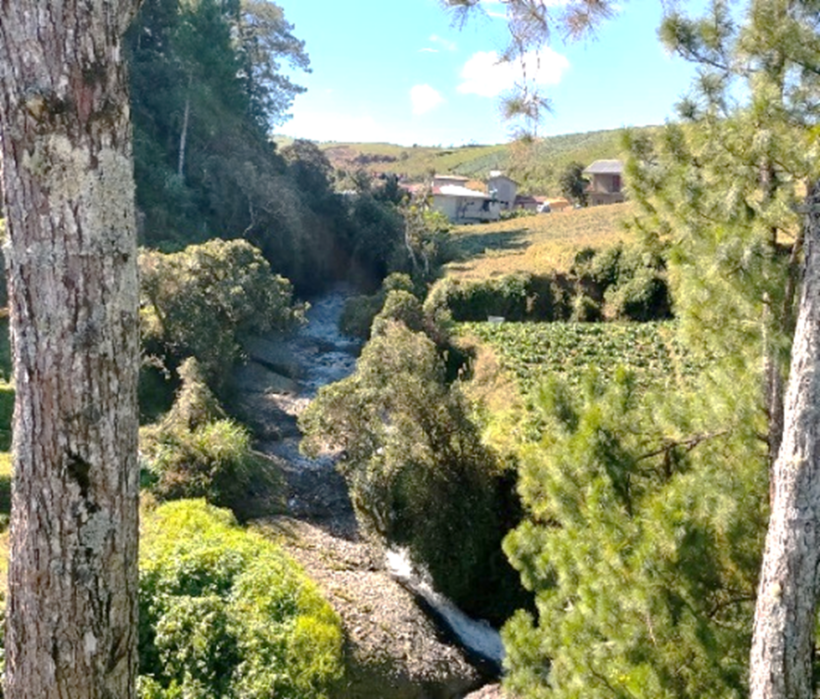
The water flowing from Inodey Falls originates from various outlets and nourishes the gardens in the areas of Cada and Am-am, sustaining life in them. As it continues its journey, it provides vital support to the rice fields and gardens in parts of Cadad-anan, Suyo, Guinzadan, and Tapapan, eventually merging with the Abra River.
Inodey Falls is fed by a network of small waterways originating from diverse sources, including Daopinas, Saleng, Saba Teweng, Manlawang, Linang, Muling, Napnap, Lamagan, Balicanao, Paykek, and Am-am. These waterways converge into a larger canal that forms a river leading to the stunning Inodey Falls. These areas are located within the boundaries of the municipalities of Bauko, Mankayan, and Tadian. During the rainy season, this river functions as a natural basin, effectively mitigating flood risks in the region.
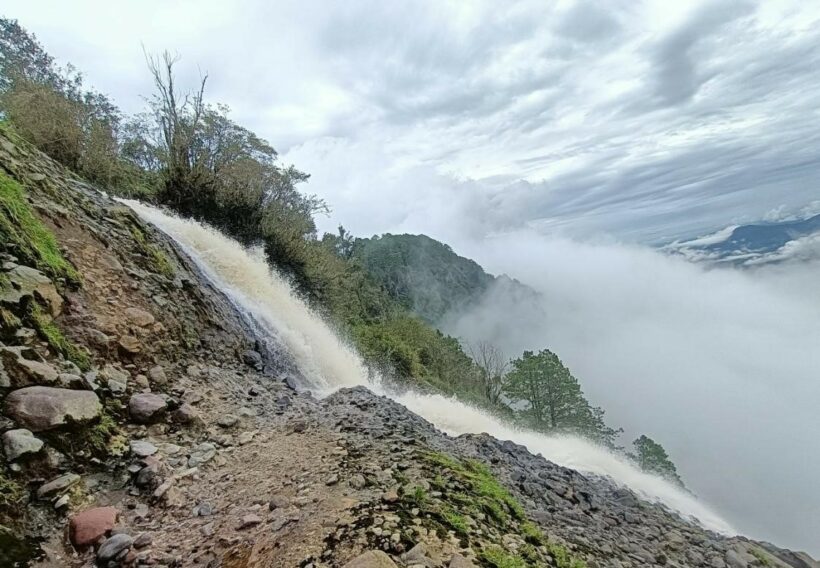
Next to the falls, you’ll find the ideal picnic spot for adventurous souls. With the soothing sound of cascading water and breathtaking views of the cliffs, it’s a perfect place to unwind, share stories, and immerse yourself in nature’s wonders. Photo credit: Jaynar S. Dolormente.
While many admire Inodey Falls for its natural beauty and tranquility, it also symbolizes the deeper wonders of life and the interconnectedness of nature. The falls not only enhance the region’s landscape but also contribute significantly to the well-being of the local community.
In an interview with local elder Flora Nabaysa Sugando, she recalled that in the earlier days, they gathered crabs, frogs, and mudfish from the river for food. They also enjoyed swimming and playing in its waters. Additionally, they could hear the melodic “day-eng” (chant) of the water as it cascaded over the rocks. Unfortunately, over the years, this vital source of food, this playground, and this miraculous wonder of nature have deteriorated, posing significant challenges for both the community and local government. What remains is the area’s scenic beauty, which serves as a vantage point for appreciating the wonders of nature.
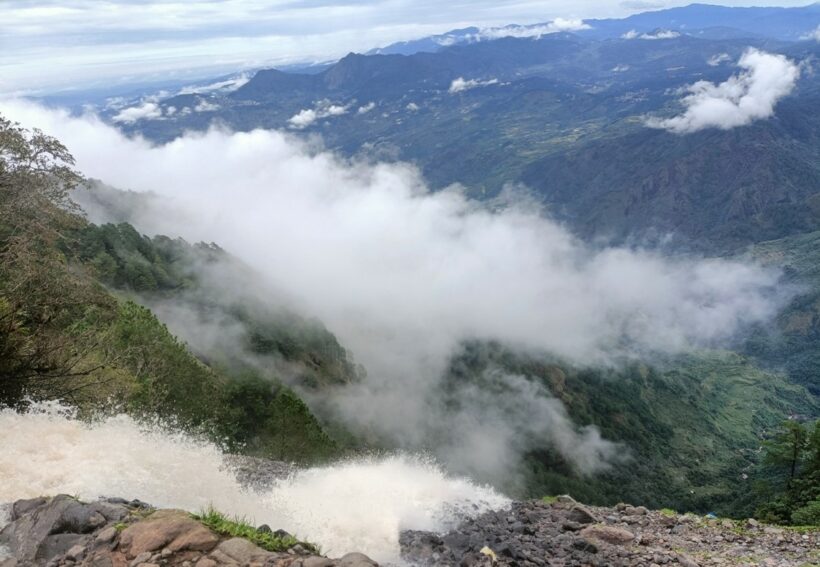
Inodey Falls is a haven for cloud watchers, offering stunning vistas of ever-shifting cloud formations and vibrant sunrises. The clouds, seemingly asleep among the trees, create a magical ambiance that changes with each passing day.Photo credit: Jaynar S. Dolormente.
Inodey Falls stands as a testament to the profound impact that natural wonders can have on our lives, offering both aesthetic pleasure and practical benefits. It reminds us of the importance of preserving these natural treasures for future generations to enjoy and cherish.
The Significance of Writing About Inodey Falls
Documenting Inodey Falls offers a valuable opportunity to engage with Indigenous knowledge systems, essential for understanding the cultural and environmental context of the falls. This endeavor underscores the importance of creative works that honor and incorporate local cultures and traditions. By exploring the cultural and ecological significance of Inodey Falls, lifelong learners contribute to a broader discourse on sustainability and cultural preservation—critical components of graduate studies in educational leadership and administration.
Moreover, writing about Inodey Falls is vital for raising awareness of Indigenous landscapes and cultures, as well as the deep connections these communities have with nature. Amplifying the voices of Indigenous communities highlights their traditional practices in safeguarding sacred sites. This exposure not only educates the public but also fosters a global appreciation for the rich cultural heritage of the Cordillera Administrative Region, including Inodey Falls located in Mountain Province. The narrative surrounding Inodey Falls weaves together ecological and cultural threads, enriching the academic landscape with diverse perspectives.
This creative endeavor aligns with the Sustainable Development Goals (SDGs), particularly SDG 11 (Sustainable Cities and Communities) and SDG 15 (Life on Land), which advocate for sustainable practices and the conservation of terrestrial ecosystems. Additionally, it resonates with the principles outlined in Pope Francis’s Laudato Si, emphasizing our collective responsibility to care for creation and combat climate change. By embracing Indigenous perspectives in academic discourse, lifelong learners can foster a deeper understanding of ecological stewardship, fulfilling the obligation to uphold the integrity of creation while addressing contemporary challenges such as climate change and cultural preservation.
About the Authors:
 Joselyn L. Alicwadey is an English teacher at Am-am National High School in Cadad-anan, Tadian, Mountain Province. She also serves as the Reading Coordinator, Journalism Adviser for English, and School Information Coordinator, all of which reflect her commitment to student literacy and communication. Currently pursuing her doctoral degree at Baguio Central University, she exemplifies a passion for lifelong learning and professional growth, continually enriching her teaching practice and her impact on the community.
Joselyn L. Alicwadey is an English teacher at Am-am National High School in Cadad-anan, Tadian, Mountain Province. She also serves as the Reading Coordinator, Journalism Adviser for English, and School Information Coordinator, all of which reflect her commitment to student literacy and communication. Currently pursuing her doctoral degree at Baguio Central University, she exemplifies a passion for lifelong learning and professional growth, continually enriching her teaching practice and her impact on the community.
 Lembert C. Lagawid is a Senior High School teacher at Dacudac National High School in Tadian. He actively contributes to students’ welfare and development as the Guidance Coordinator, Boy Scouts of the Philippines Coordinator, Vice Chairman of the Child Protection Committee, and Grade 12 Class Adviser. Currently, he is pursuing his doctoral degree at the Baguio Central University.
Lembert C. Lagawid is a Senior High School teacher at Dacudac National High School in Tadian. He actively contributes to students’ welfare and development as the Guidance Coordinator, Boy Scouts of the Philippines Coordinator, Vice Chairman of the Child Protection Committee, and Grade 12 Class Adviser. Currently, he is pursuing his doctoral degree at the Baguio Central University.
About the Editor:
 Genevieve Balance Kupang serves as BCU’s Dean of the Graduate School and International Relations Officer. A member of the board of directors for the World University Network of Innovation (WUNI)-Leaders, she works for global collaboration. She delves into the intersections of culture and the arts, peace and justice, the integrity of creation, interfaith dialogue, curriculum and instruction, and ethical AI usage. One of her greatest joys is empowering learners to realize their fullest potential, nurturing their skills, and encouraging them to share their unique voices with the world.
Genevieve Balance Kupang serves as BCU’s Dean of the Graduate School and International Relations Officer. A member of the board of directors for the World University Network of Innovation (WUNI)-Leaders, she works for global collaboration. She delves into the intersections of culture and the arts, peace and justice, the integrity of creation, interfaith dialogue, curriculum and instruction, and ethical AI usage. One of her greatest joys is empowering learners to realize their fullest potential, nurturing their skills, and encouraging them to share their unique voices with the world.


